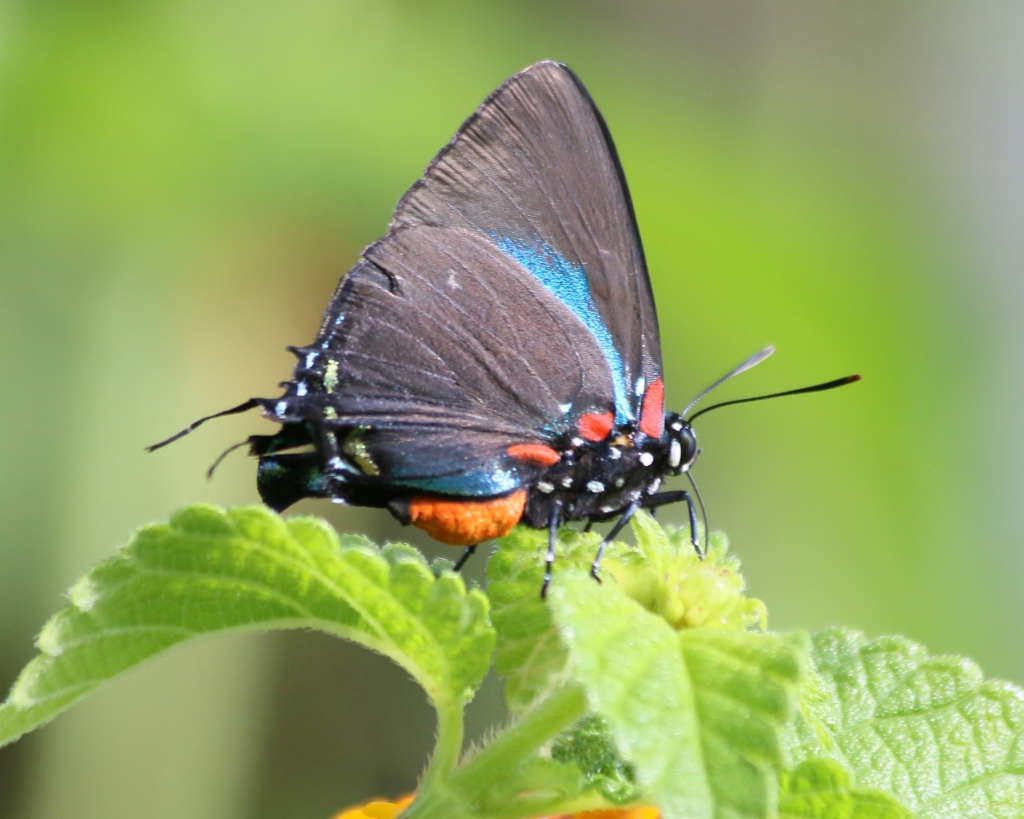
As a horticulturist by training, I have a drive to tidy up the landscape – remove spent flower heads, prune dead branches, and remove certain undesirable plants. When I noticed some mistletoe growing in my oak trees, I sincerely wanted to cut it out. Mistletoe (Phoradendron) is a parasitic plant, growing into the tissue of other plants, usually trees, and is a freeloader for the rest of its life, sipping on the sugars created by the host plant. This ne’er-do-well lifestyle goes against the grain of my work-for-what-you-need ethic and I wanted it gone.
The problem with mistletoe is it is usually high in the branches of the host tree. It’s not feasible to climb up to the slender branches fifty feet or more off the ground to remove it. Also, because its “roots” – haustorium – penetrate the tissue of their host, you can’t just cut off the part of the mistletoe you can see. To truly remove it, you must cut off the branch it is growing on, as well. Neither climbing to the tippy-top of a large oak, nor cutting off branches to remove the mistletoe, is something that I’m going to do, frankly, despite my burning desire to get it out of my trees.
Every winter, I see the mistletoe revealed by its evergreen leaves when the oaks shed their deciduous ones. It feels like the plant is basically thumbing its nose at me. “Ha, Ha. I’m still here! And you can’t get me!” Visualize me gazing across the wintery expanse of my yard, fuming.
Why all this talk about a winter plant? Stay with me a moment longer. One very hot July day, I’m watching the butterflies and bees on my Mountain Mint (Pycnanthemum incanum) when I see something I’ve never seen: an inch-wide black butterfly with brilliant turquoise spots and a bright orange belly. Even stranger, I can’t tell which end is the head since there are moving antennae located north and south. Is this two butterflies together? What am I seeing?
What I was seeing was a Great Purple Hairstreak butterfly (Atlides halesus). Although this sounds like the latest hairstyle fad, it’s not. Whoever named several butterflies did a very poor job. For example, the Red-Spotted Purple butterfly is black, orange, and blue. No red. No purple. And there is no purple anywhere on this hairstreak either. Plus, he’s hardly “great” at only an inch or so wide, but I digress. I stared for quite a while at the seemingly two-headed creature before I determined this insect has hind wings with hair-like projections on the edges that resemble antennae. The butterfly rubs the hind wings together, giving the effect of moving antennae. What an amazing adaptation to throw off predators. Brilliantly colored and cleverly made. Mother Nature never fails to amaze.
“Okay cool,” you say. “But what does all this have to do with mistletoe?” In researching this amazing creature, I learned that the plant that feeds the caterpillars of the Great Purple Hairstreak is, you guessed it, mistletoe, and only mistletoe. Without this plant to receive the butterfly’s eggs, there are no amazing black-turquoise-orange-white dotted butterflies to delight our eyes.
So nature teaches me yet again that every creature has a purpose in the biome, even a “freeloader” like mistletoe.